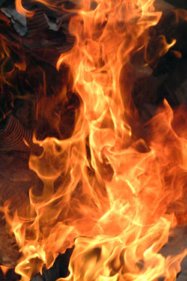What to Know About Fire Alarms in your Home
How do fire alarms work? You will find the answers here.
There are actually a couple of different designs. From the basic smoke detectors that are found in most private homes to the elaborate fire alarm systems located in businesses and hotels.
The purpose of the simple and the elaborate models are the same. They are designed to provide you with a warning to leave the building quickly.
At one time, house fires were common. Lives were lost and property was destroyed. The first volunteer fire department in the US was not created until 1736. Benjamin Franklin was responsible for that, as well as the first fire insurance company.
In order to qualify for fire insurance these days, you need at least a smoke detector. Insurance companies advise those seeking a policy concerning the type of system they need.

The basic home smoke detectors include a battery, a light and a siren, housed in a disc-shaped plastic container. As the name suggests, they work by detecting smoke in the house.
Some detectors include visual alarms for those that are deaf or hard of hearing. Some detectors and large systems include both flashing strobe lights and sirens.
Small units designed for home use are typically powered by a single 9 volt battery. An alarm will sound when the battery is about to go dead.
So, how do these alarms work to detect smoke or heat? They make use of either a photoelectric or ionization sensor. Some of the more elaborate systems include both.
- The photoelectric systems include a beam of light that normally passes in front of the detector in a straight line. Smoke disrupts or scatters the light beam, directing it at the sensor and triggering the alarm.
- The ionization sensors are less expensive, but tend to be overly sensitive. They can detect the tiniest particles of smoke, which means that cooking often sets them off.
Fire alarms that include an ionization chamber are triggered when smoke enters the chamber and disrupts an electric current. They are slightly radioactive, but are considered safe for use at home.
They can last for over 400 years, another thing that makes them a popular choice.
Heat or temperature is not used in the systems, because a room can become smoke-filled long before it becomes hot.
The most common cause of death in house fires is smoke inhalation.
Now you know the basics of how do fire alarms work. They provide an extra bit of protection to you and your family.
These fire alarms are designed to detect the unwanted presence of fire by monitoring changes associated with combustion.
In general, it is either classified as automatic, manually activated, or both.
Automatic systems can be used to notify people:
- to evacuate in the event of a fire or other emergency
- to summon emergency forces aid
- to prepare the structure and associated systems to control the spread of fire and smoke.
These systems are designed to meet the local fire codes.
Initiating devicesManually activated devices like a manual pull station are constructed to be readily located (near the exits), identified, and operated.
Automatically activated devices can take many forms:
- heat detector
- flame detector
- Sound (audible signals)
- Light (visible signals)
SUBMIT YOUR COMMENT!!
Do you have a great story about this? Share it!
What Other Visitors Have Said
Click below to see contributions from other visitors to this page...
Home Fire Alarms Tips
Monitoring Saves Lives and Property
Alarm Pull Station, Do You Know How to Use It?
Fire Codes You Must Know
Types of Smoke Alarms
Choosing the Right Carbon Monoxide Alarm


